I took advantage of a sunny afternoon to inspect more closely the fascinating architecture I had often observed on St John Street. It’s an ancient route, described in 1170 as the street ‘which goeth from the bar of Smithfield towards Yseldon [Islington]’. This is the earliest known documentary reference to the street, which later became known simply as ‘Clerkenwell Streete’. Its present name is taken from the adjacent priory of St John, established by the Knights Hospitallers in the twelfth century.
You can see it here on the Agas Map of 1561 (as reprinted and modified in 1633) …
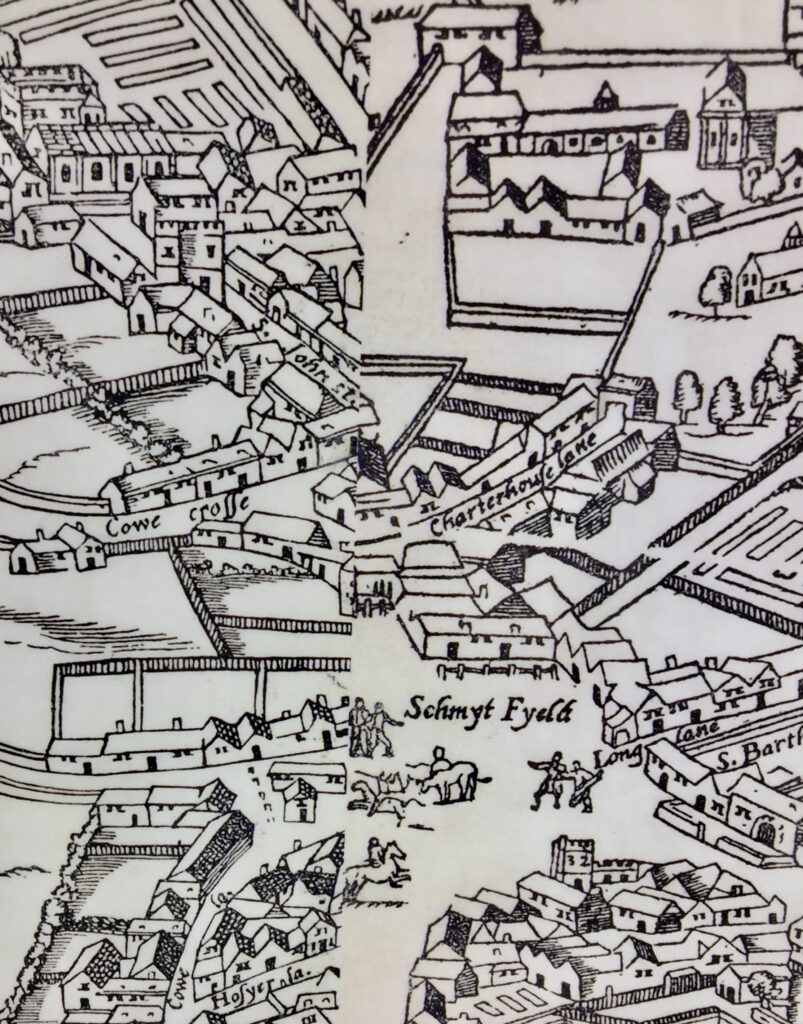
Starting my walk at the Smithfield Market end the first buildings I encountered were numbers 1 and 3-5 (EC1M 4AA). The sunlight showed them off to great effect …
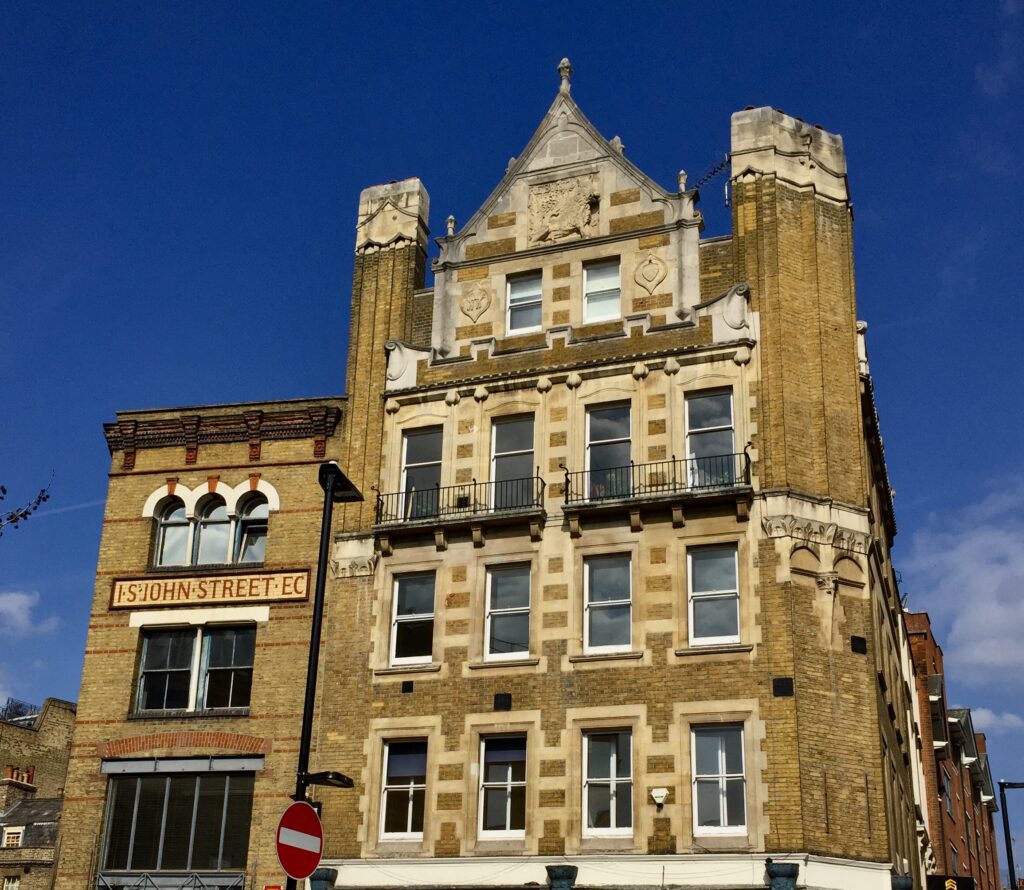
The ‘Venetian’ style Number 1 appears to have been built in the mid-1880s for the charmingly named Frederick Goodspeed, a grocer who had acquired, and briefly ran, an old coffeehouse on the site.
My camera couldn’t do justice to the decorations on numbers 3-5 so I have borrowed this image from British History Online …
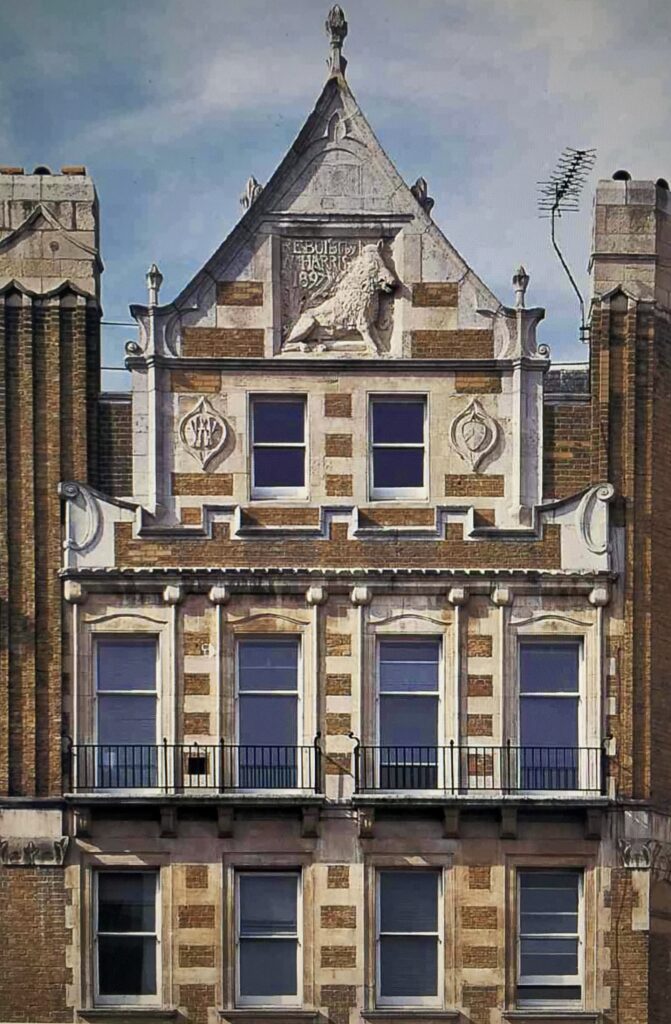
The building was constructed in 1897 for William Harris the ‘Sausage King’, sausage manufacturer and proprietor of a well-known restaurant chain specialising in sausage and mash. Faced in brick with stone dressings, it shows Arts-and-Crafts and Art Nouveau influence; the south front rises to an ornate gable decorated in relief with a wild boar, Harris’s name and the date. Here’s one of his promotional leaflets aimed at ‘City Clerks and others’…
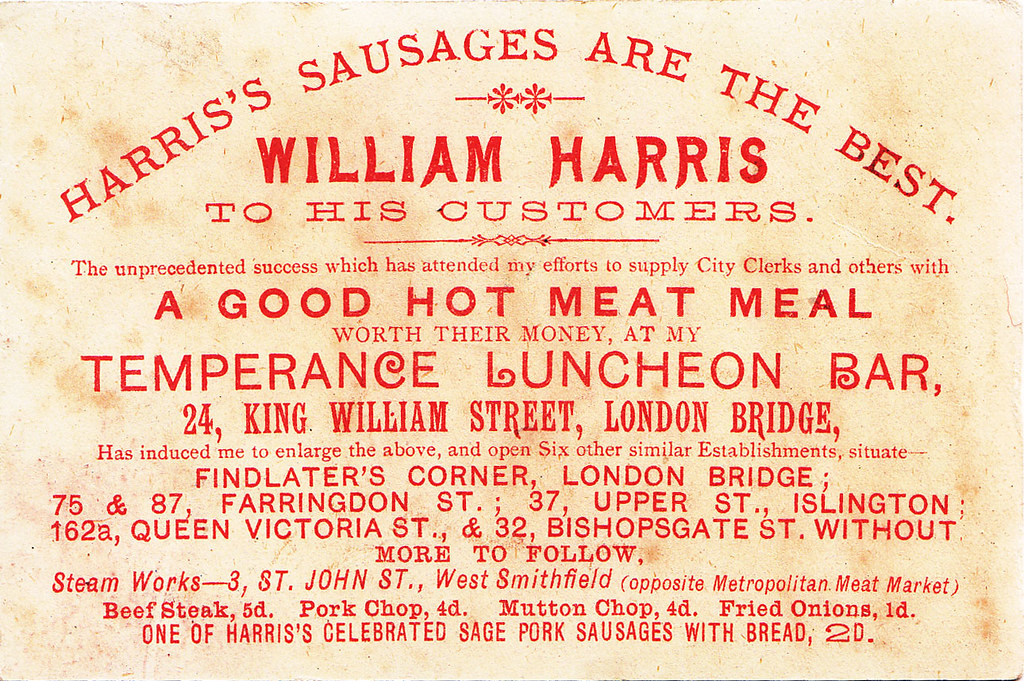
The Victorians loved an eccentric and he obliged, whether it be by dressing entirely inappropriately for his job (opera hat, dinner suit and cravat with diamond pin) or riding a pig from Brighton to London (with the words ‘tomorrow’s sausages’ written cruelly on its back).
Harris’s registered trademark was a colour picture of himself riding a huge pig to victory in the ‘Pork Sausage Derby’ …
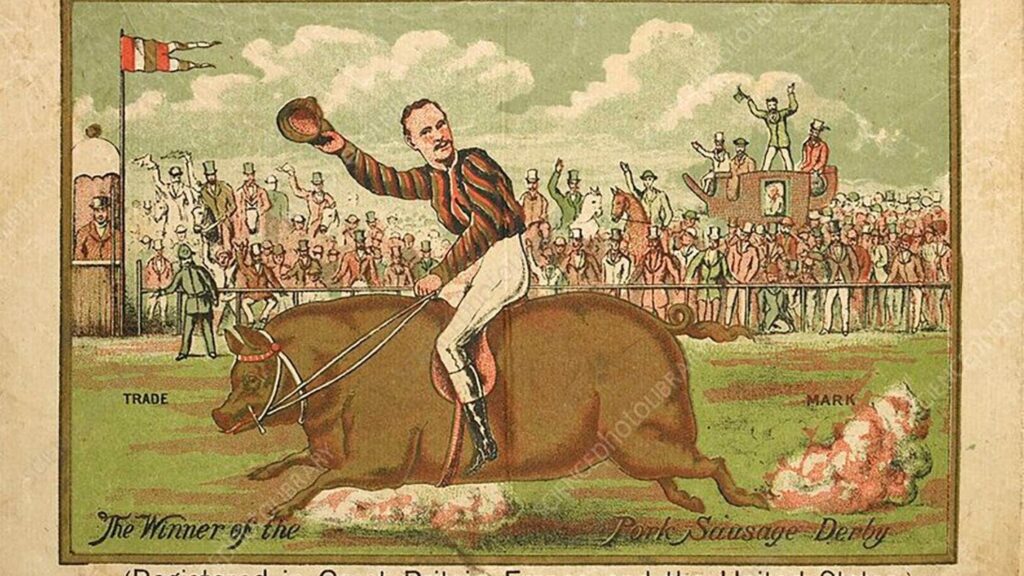
Harris in full self-promotion mode …
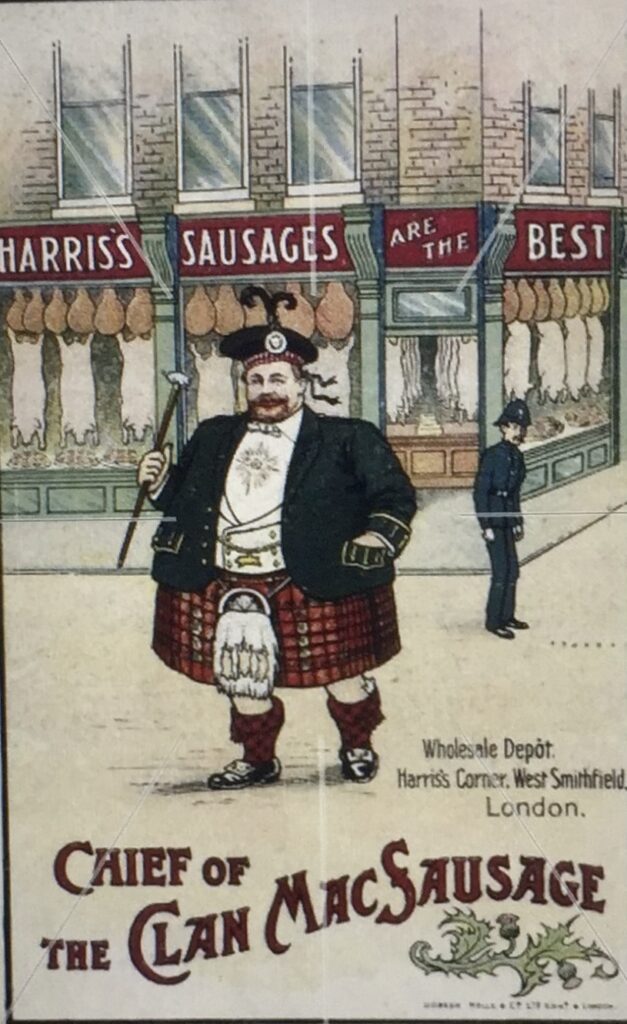
One anecdote tells of the time when he was visiting Brighton and a tramp ran off with a string of sausages from one of William’s shops. The thief was caught, and was challenged to a sausage-eating contest – if the tramp won he could go free. A huge crowd gathered to watch; when William delightedly won (by four sausages) he gave the tramp a sovereign and his freedom.
William ‘No. 1’ Harris, as he styled himself, lived over the shop at with his family including sons William ‘No. 2’ (Prince of Sausages) and William ‘Nos. 3 and 4’. His firm, William Harris & Son, remained here until the late 1950s or early 60s.
For an amusing look at Harris and his world I highly recommend this witty blog by Sheldon K Goodman and do read this wonderful obituary from the London Standard, 3rd May 1912.
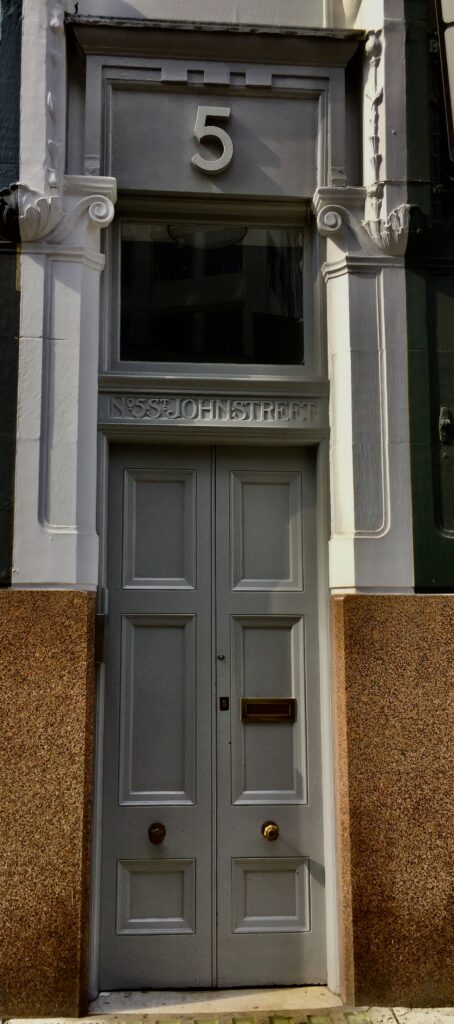
Number 7 was the scene of a tragedy. The so-called Clerkenwell Cinema Fire occurred in the Dream City ‘adult cinema’ (also known as the ‘New City Cinema’) on 26 February 1994. Due to the pornographic nature of the films it screened, and the strict cinema licensing regulations in London at the time, the cinema was operating illegally, and thus was not subject to fire inspections as legal entertainment venues were …
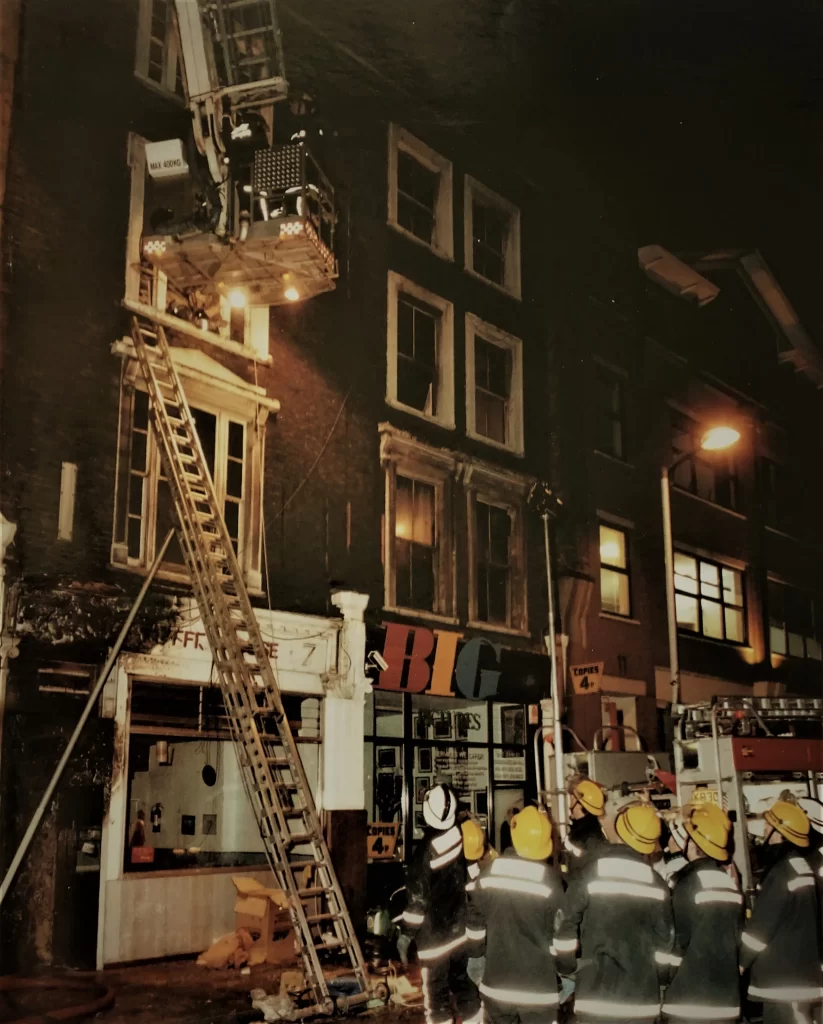
The fire was caused by arson when a deaf, homeless man called David Lauwers (known to his friends as ‘Deaf Dave’) lost a fight with a doorman over entry fees. After being ejected from the cinema, Lauwers returned with a can of petrol and set fire to the entrance area. The fire took hold rapidly, trapping most of the staff and patrons within. Eight men died at the scene, seven from smoke inhalation and one from injuries sustained from jumping from a high window in the building, and there were three further fatalities in the following months in hospital, as well as thirteen injuries. Lauwers was later given a life sentence.
You can read a dramatic recounting of what happened that night in this blog by a Retired London Fireman.
On the left, the building today …
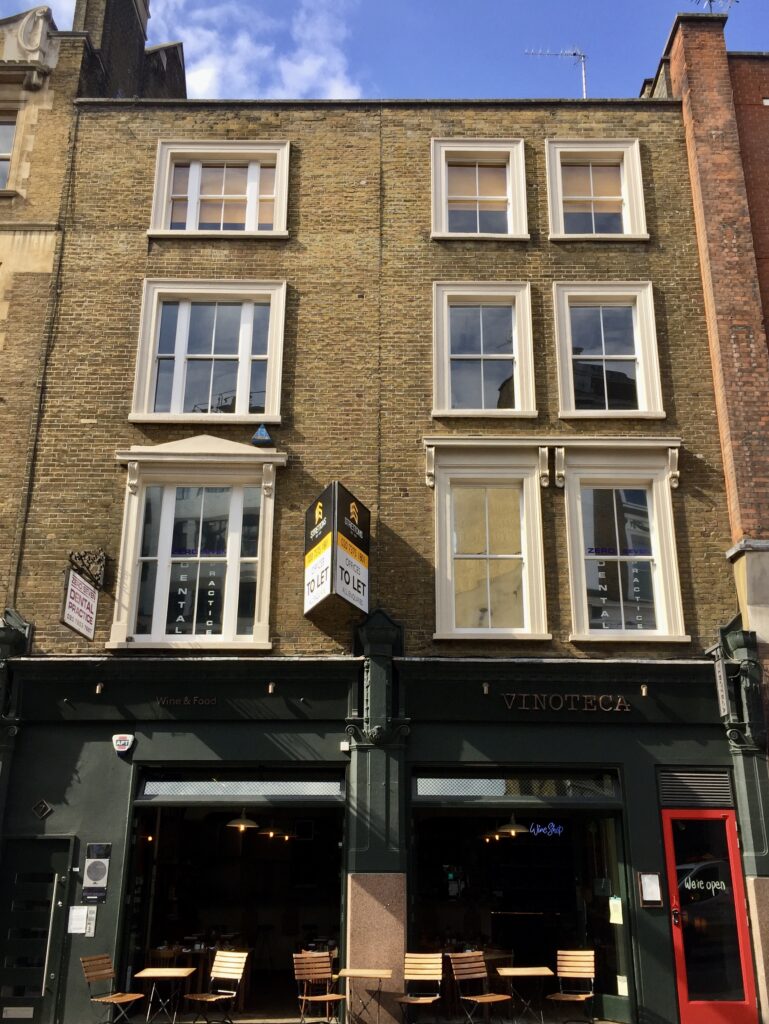
Numbers 69-73 consist essentially of two houses built in 1817–18, originally separated by the entry to a large yard, where warehousing was later built …
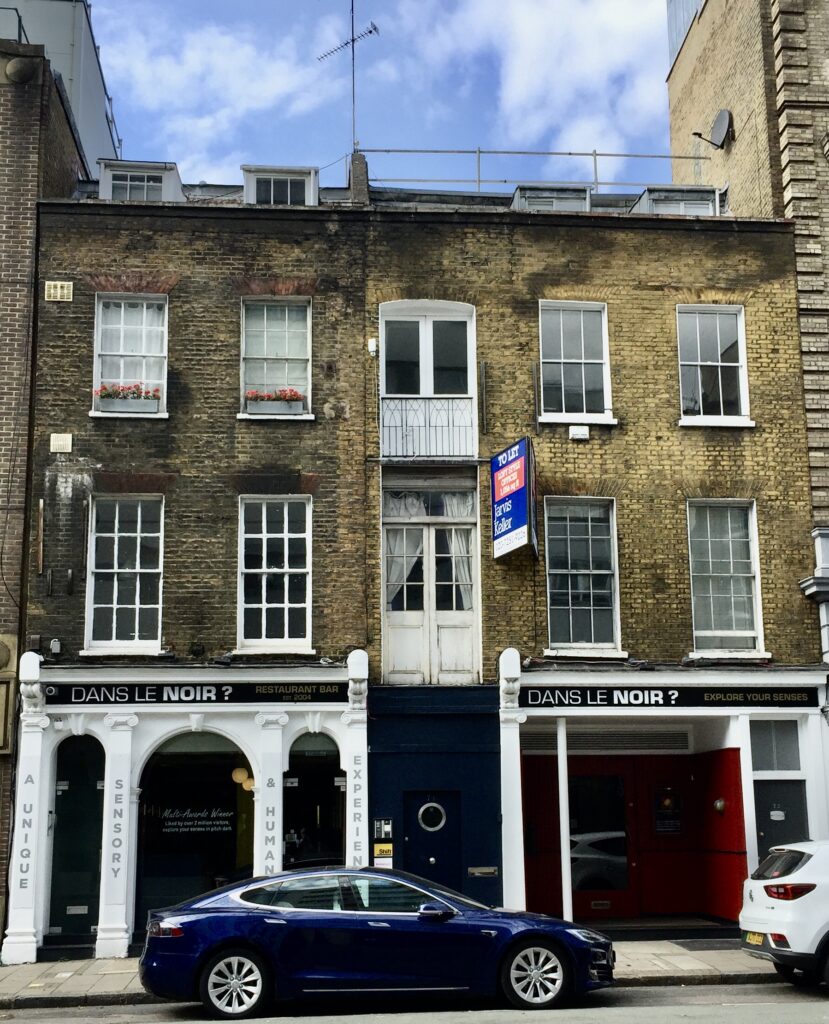
British History Online tells us that Number 69 appears to retain its original façade, but the other house has been refronted; this may have been done in 1896 when it was extended over the alley and the two houses thrown into one, together with the cork-warehouses at the rear, which had been partly rebuilt following a fire in 1882. The treatment of the ground floor at No. 69, with arched openings and Ionic pilasters, executed in stucco, is the remnant of a remodelling of the whole ground-floor front of probably carried out in the mid-nineteenth century. The present shopfront at No. 73 dates from 1884, though it has been altered in recent years.
Number 57 was once the White Bear pub dating from 1899 …
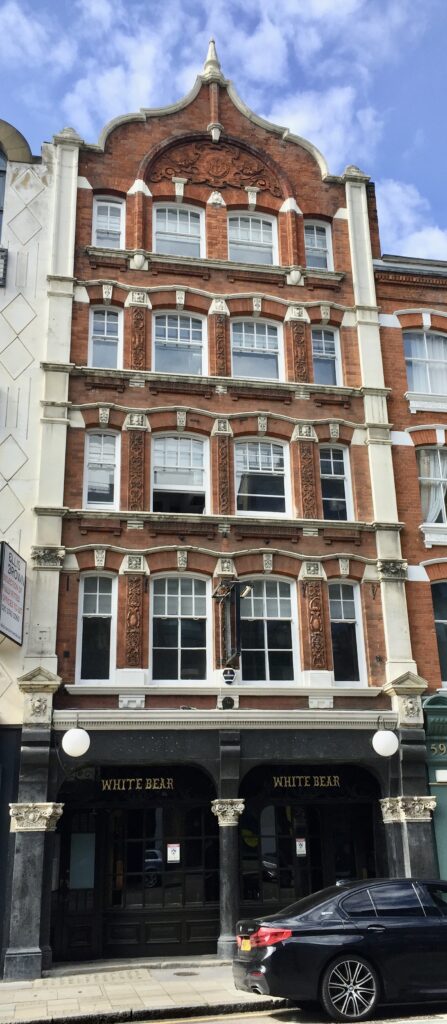
Now closed, it looks like a Covid victim.
At 115-121, this block of tenements and shops belongs to the select group of public housing schemes designed by the LCC Architect’s Department in the 1890s and early 1900s in an Arts-and Crafts or ‘English Domestic’ idiom …
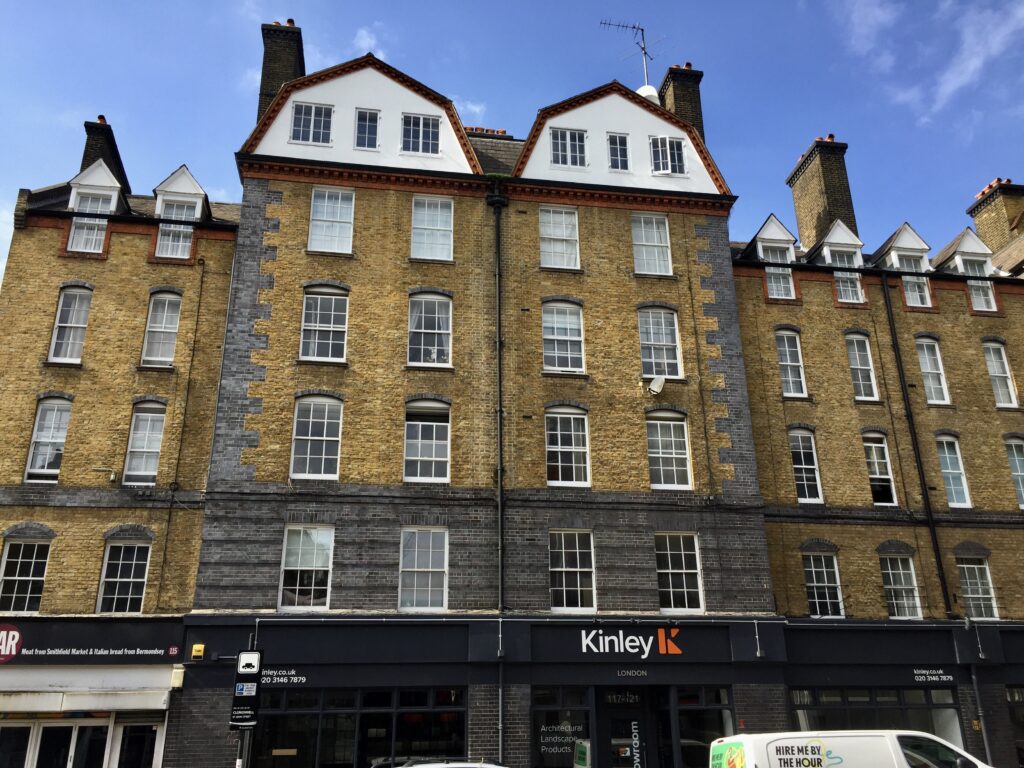
Built in 1904–6, Mallory Buildings stands on part of the site of the medieval priory of St John, relics of which were discovered during the excavation for the foundations. The name commemorates Robert Mallory, one of the former priors.
Numbers 159–173 once housed Pollard’s Shopfitting works with construction being carried out in 1925–7. The new building contained showrooms, offices, workshops and stores. On the fourth floor were the main administrative offices, and the boardroom, panelled in Italian walnut with Ionic pilasters …
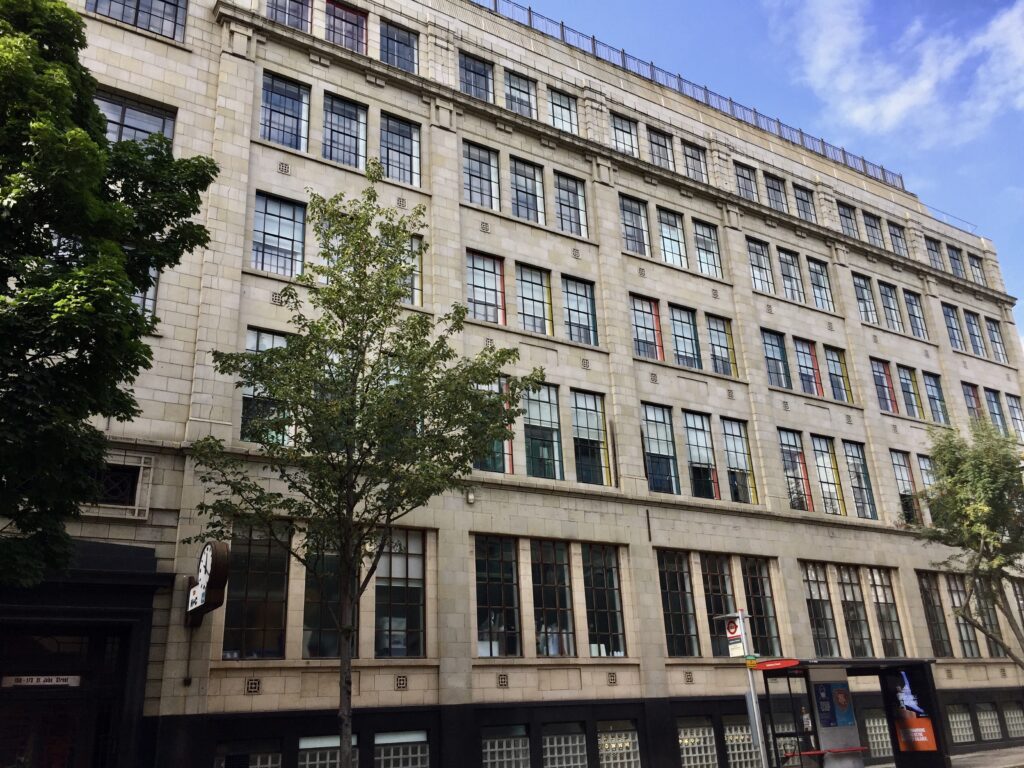
Black granite was used to frame the bronze entrance doors …
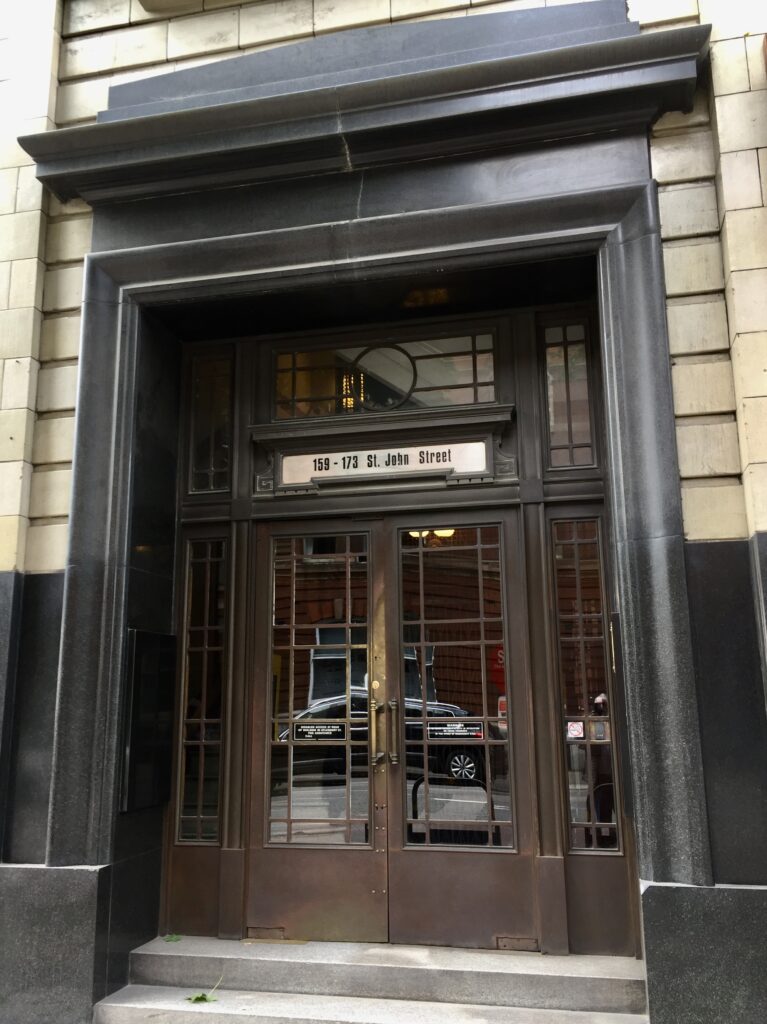
Founded in 1895 by Edward Pollard, Pollards held the English patents for the American invention ‘invisible glass’, used in shopfronts. This employs steeply curved concave glass to deflect light towards matt black ‘baffles’ so that no reflections show in the window. The company installed invisible-glass windows in several important London stores, including Simpsons of Piccadilly (now Waterstones), where they remain intact as well as at Fox’s Umbrellas on London Wall (now a wine bar) …
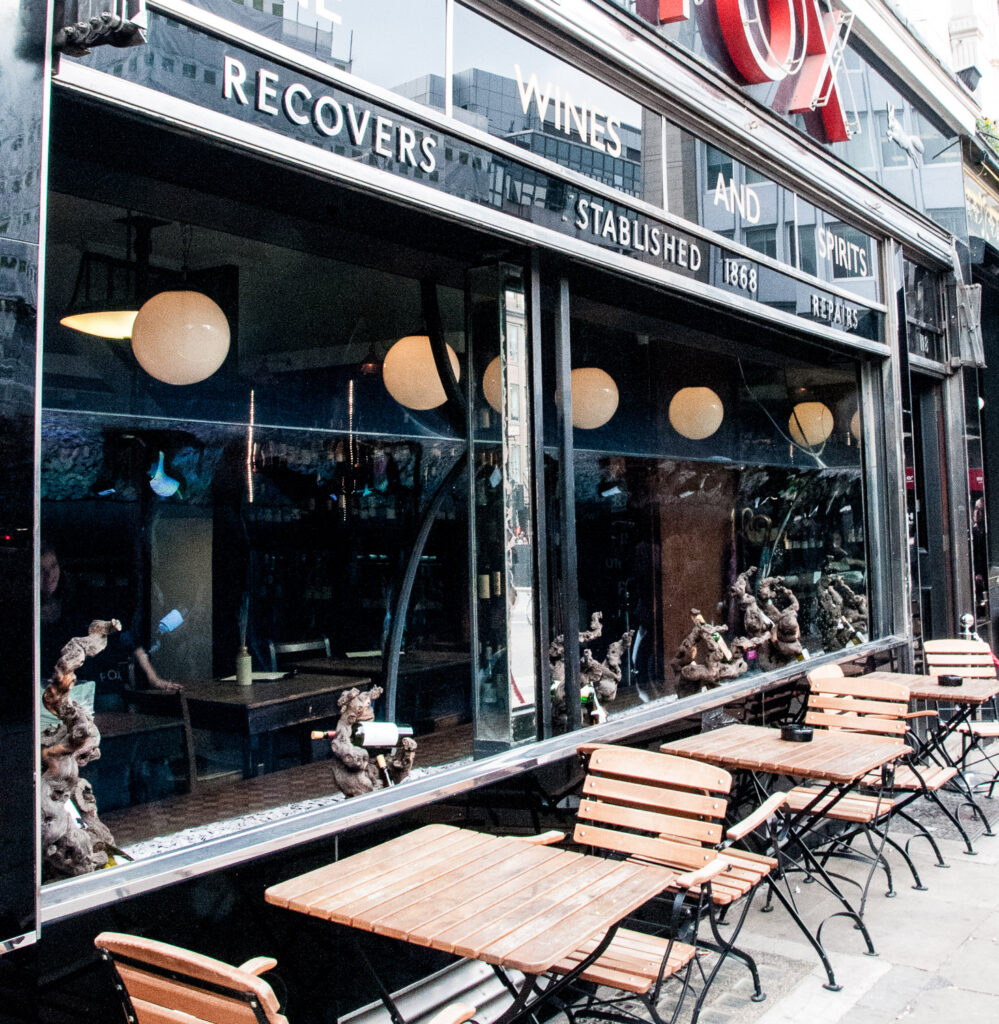
In 1967 the Pollard Group relocated to Basingstoke and the business continues today as Pollards Fyrespan, now in Enfield. The former Clerkenwell works are now used as offices and small-business workshops.
Three old houses survive at numbers 181–185 …
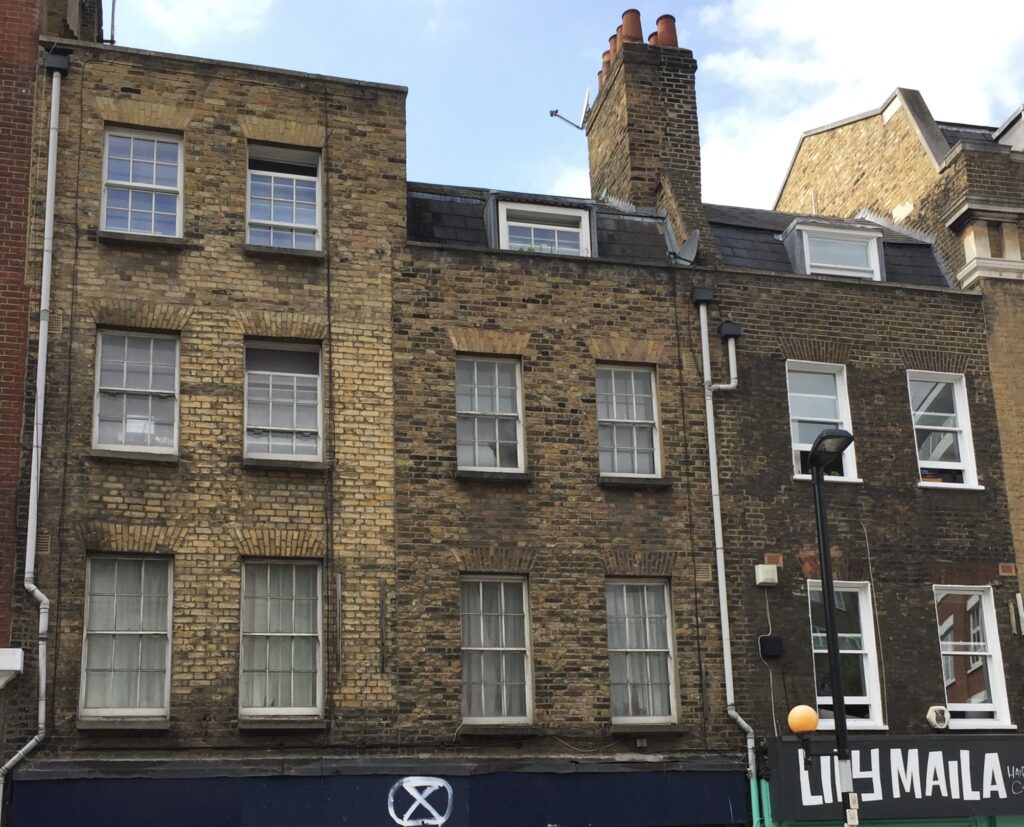
Finally, at numbers 223-227 you can look up and see the name Ingersoll picked out in green and cream mosaic. The factory was built in the 1930s for property speculator Gilbert Waghorn. Before it was completed, Ingersoll agreed to move in and so the architect, Gilbert’s brother Stanley Waghorn, modified slightly the parapet on the St John Street façade to incorporate the logo …
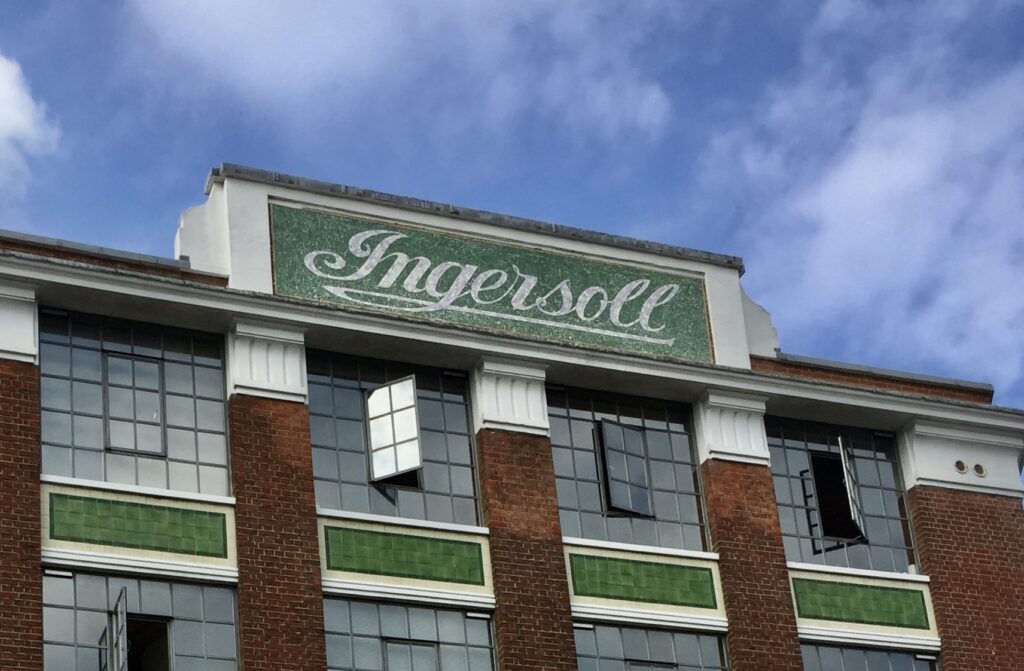
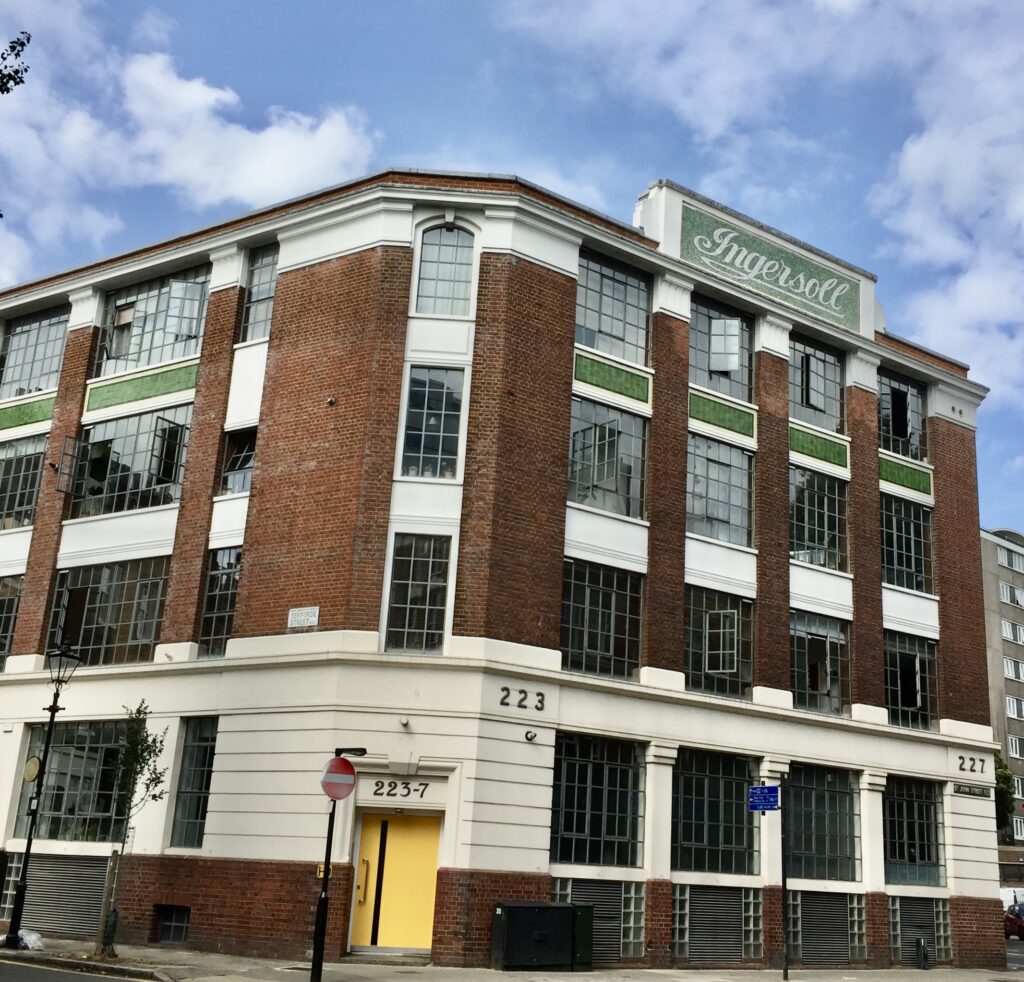
The Ingersoll Watch Company grew out of a mail order business started in New York City in 1882 by 21-year-old Robert Hawley Ingersoll and his brother Charles Henry Ingersoll. When they added the one-dollar watch to their catalogue, the business really took off. Millions were sold and they cheekily boasted it was …
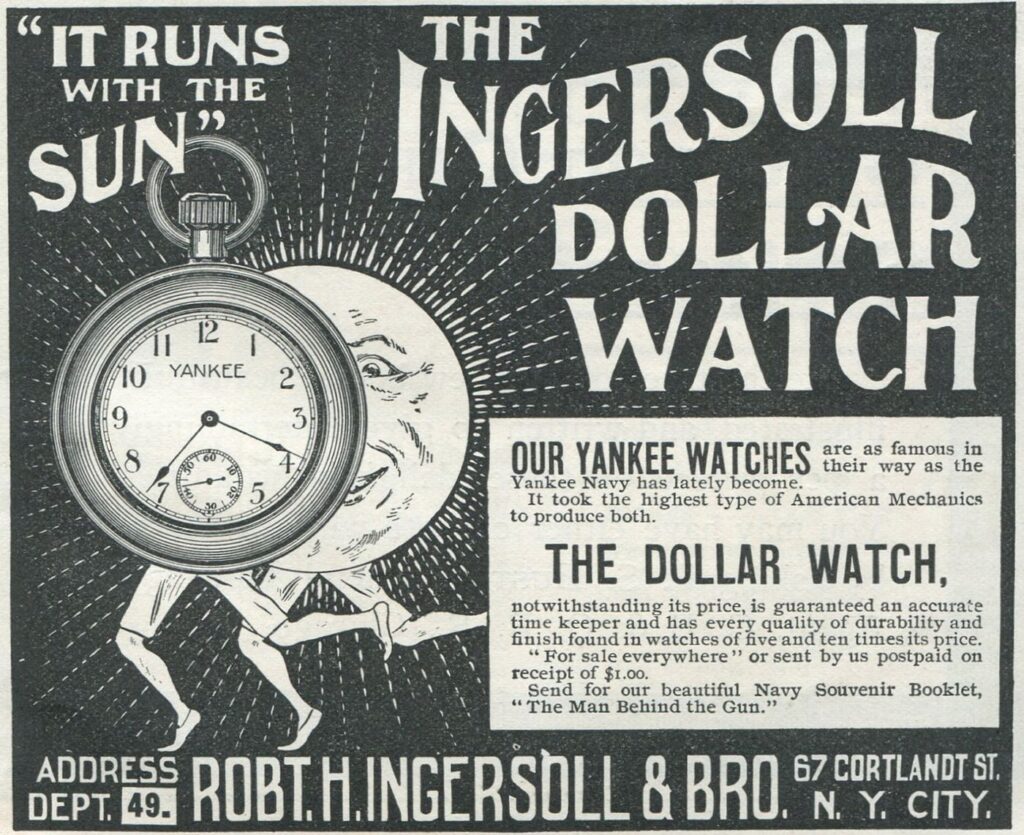
In 1904 they opened a store in London and in 1905 Robert sailed to England and introduced the Crown pocket watch for 5 shillings, which was the same value as $1 at the time (four dollars to the pound – those were the days!) …
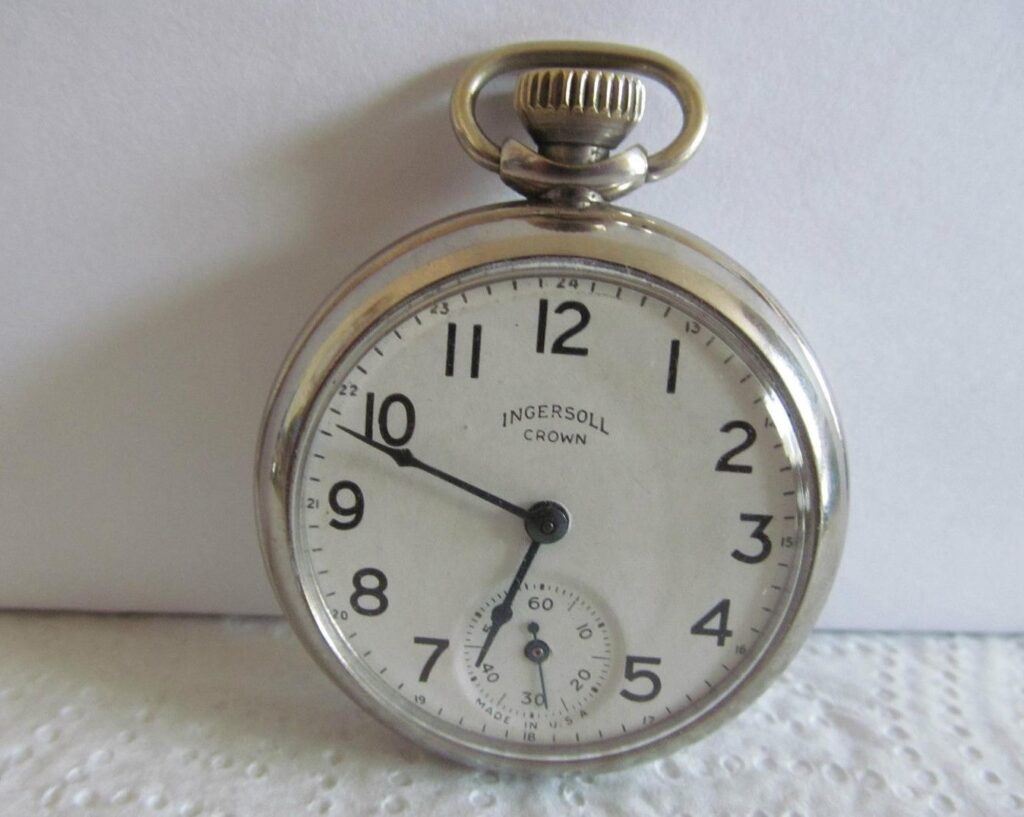
Business boomed even more when they won the contract to produce Mickey Mouse watches for Disney …
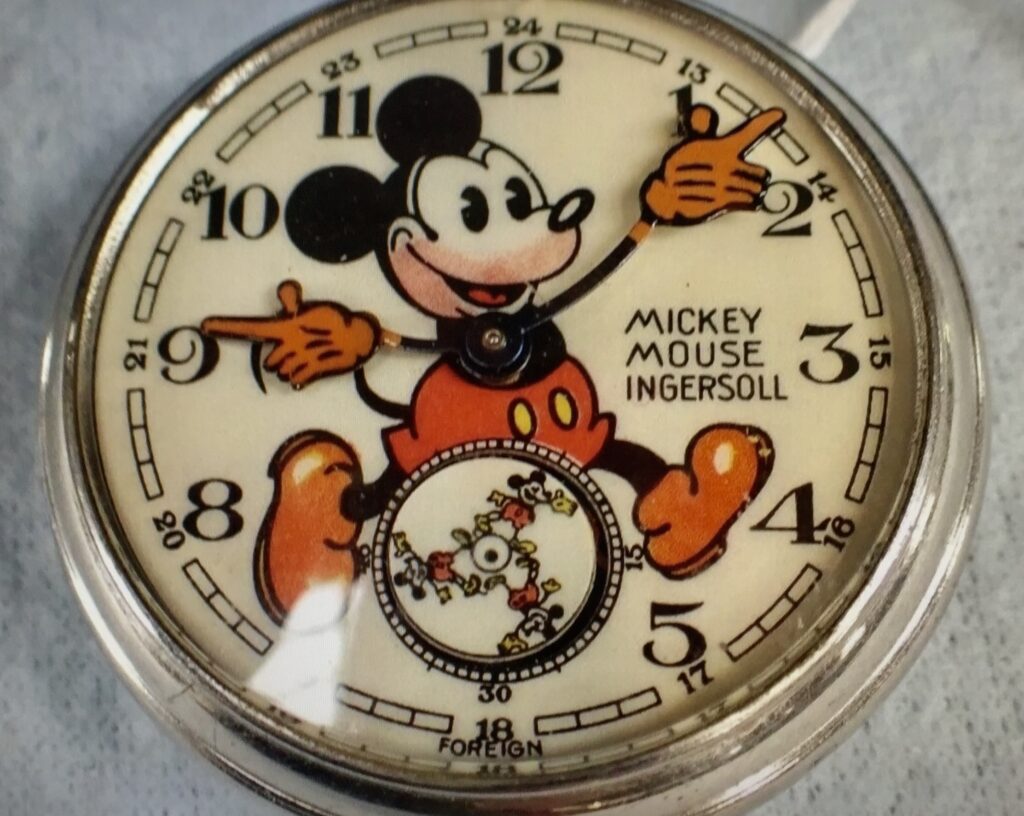
Ingersoll went bankrupt during the recession that followed World War I. It was purchased by the Waterbury Clock Company (now the Timex Group USA) shortly after for 1.5 million dollars. Today they are owned by Zeon Watches, a British subsidiary of the Chinese company, Herald Group. They are still distributing Ingersoll watches in more than 50 countries around the world.
I will be returning to St John Street again in a future blog. In the meantime, perhaps you can imagine how this narrow thoroughfare got its name?
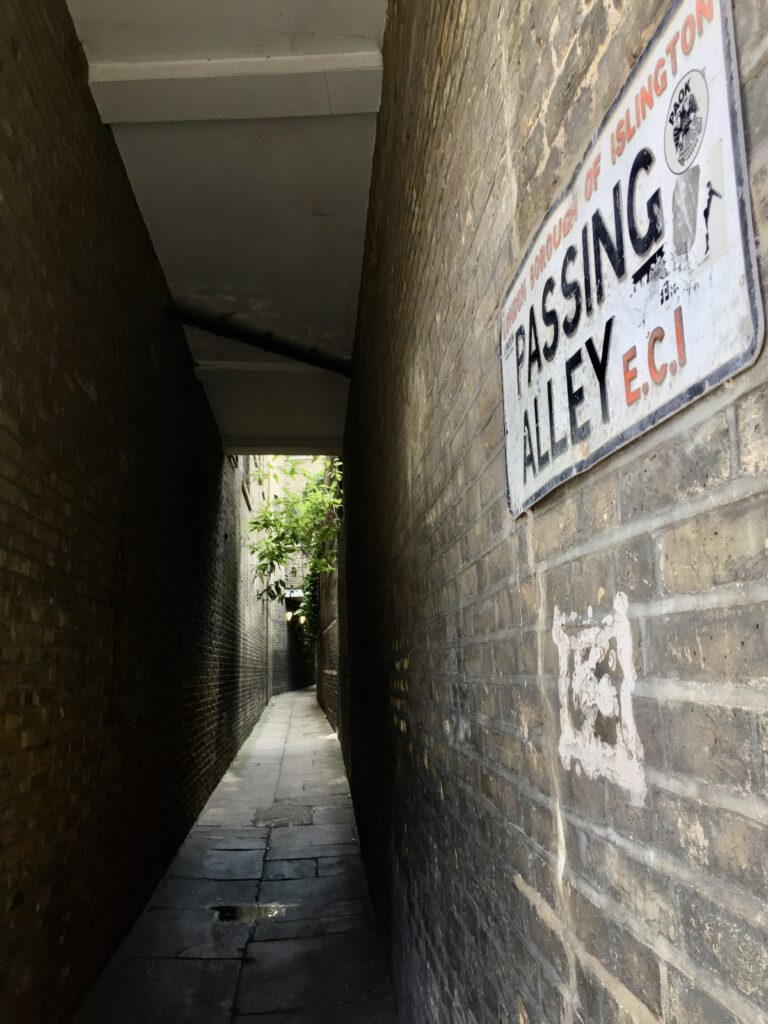
If you would like to follow me on Instagram here is the link …
